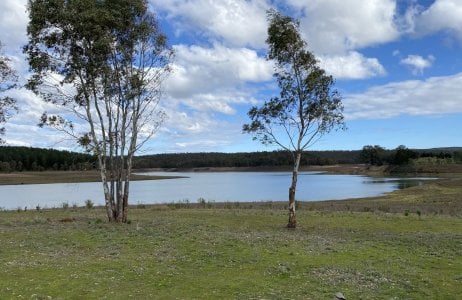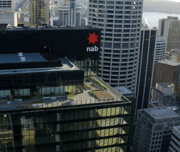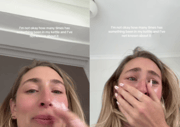Unsettling discovery near Aussie reservoir kicks off controversy—‘This is so bad’
- Replies 4
Content Warning: This article contains descriptions of animal carcasses and discussions surrounding wildlife management practices, which some may find disturbing. Reader discretion is advised.
In Australia, concerns about the safety and purity of drinking water are paramount, with communities relying on reservoirs for their supply.
However, recent discoveries near one of the country's largest drinking water reservoirs have sparked alarm and raised questions about potential contamination.
The findings have prompted authorities and residents alike to confront the implications for public health and environmental integrity.
In a revelation that has caused considerable distress and sparked a debate over wildlife management, piles of dead kangaroos have been found decomposing near South Australia's South Para Reservoir, a crucial source of water for the renowned Barossa Valley wine region.
The grim scene, captured in images and video footage, led to public outcry and raised questions about the ethics and safety of pest control practices.

The South Para Reservoir, a linchpin in the region's water supply, is typically off-limits to the public; however, recent footage shed light on what SA Water internally referred to as a 'pest animal' control program and critics condemned the disturbing result as ‘unacceptable’.
The footage, taken between October 2023 and May 2024, showed a burial pit approximately 1,100 metres from the reservoir, where kangaroo carcasses were regularly disposed of by the state's water supplier.
The individual who recorded the footage, possessing detailed knowledge of the site's operations, has chosen to remain anonymous due to the sensitive nature of the information.
‘I don’t think it's the correct way of dealing with them. They call it “pest management” but if they're piling up roos all they’re doing is attracting foxes,’ he expressed, highlighting the potential for the site to draw in other unwanted wildlife.
The images depict a burial pit that, after rainfall, fills with water, stagnates, and turns a sickly green hue.
Videos from December showed kangaroo bodies piled up and floating in the murky water, but months later, only bones remain, scattered across the site.
‘There were bones everywhere. It looked like a massacre site,’ the photographer described, his reaction one of shock and dismay.
Despite the proximity of the burial pit to the reservoir, SA Water assured the public that the decaying bodies do not pose a risk of contamination.
‘The water shown in this photo is not the reservoir or any other water source, it is a small volume in the bottom of a pit following a significant rainfall event,’ a spokesperson for SA Water stated, attempting to allay fears of water pollution.
The company also addressed concerns regarding the attraction of vermin.
‘Kangaroos may be placed on the edge of a pit like this before usually being moved into the pit once the water subsides, with the pit then backfilled as part of our regular operational activities,’ it explained.
‘Animal carcasses placed in the pit are covered and as a result, there are no significant issues with vermin in or around these locations. The site in the photo is within a restricted area, far from public access or water sources and does not pose any water quality concerns.’
The practice of kangaroo shooting for population control is a contentious issue in Australia, often compared to other controversial wildlife culls worldwide.
SA Water contended that the kangaroo population at the South Para Reservoir site could reach ‘very high numbers’, potentially threatening water quality, causing ‘minor’ damage to infrastructure, and increasing the risk of vehicle accidents.
Volunteer shooters are permitted to enter the land around the reservoir to target invasive species such as deer, foxes, rabbits, and goats.
However, records indicated that native kangaroos are among the most frequently culled animals.
SA Water maintained that the culling is a ‘necessary’ form of land management and asserted that they respond diligently to inquiries regarding their practices.
The anonymous photographer, however, disputes the claim of high kangaroo numbers at the site and has grown increasingly concerned about the morality of the culling process.
‘When I first saw the burial pit I thought: What the hell is this? My stomach turned and over time I started to think: This is so bad,’ he shared.
‘I feel like if other people knew about this, then they'd have a different opinion about what's right and what's wrong.’
Kangaroos Alive, an advocacy group, echoed these concerns, challenging the government's characterisation of kangaroos as pests.
Dennis Vink, the group's Campaign Manager, argued ‘Kangaroos are native grazers that have co-evolved with Australian ecosystems for over 20 million years and are crucial ecosystem engineers.’
‘Kangaroos continue to be scapegoated, while their contribution to the total grazing pressure is minimal compared to introduced livestock and herbivores. It is unacceptable that the SA government refers to kangaroos as pests when they are not, resulting in them being treated just as poorly.’
The welfare of kangaroos during culling programs is a point of contention between SA Water and Kangaroos Alive.
While SA Water claimed that its shooters adhere to ethical codes of practice and kill animals humanely, Vink argued that it is impossible to ensure welfare standards are met without public oversight and monitoring.
He also disagreed with the government-mandated methods of euthanising joeys, which involve either decapitation or bludgeoning.
‘The killing of kangaroos takes place under the cover of night in remote areas, out of sight of the public and the government, evading all scrutiny from both,’ Vink pointed out.
The unsettling discovery near one of Australia's largest drinking water reservoirs has sparked widespread concern among environmentalists and animal welfare advocates.
As authorities grapple with addressing the environmental impact, another ethical debate unfolded on a different front.
An international sportswear giant faced criticism over its use of kangaroo leather, reigniting the contentious discussion surrounding the ethical considerations of sourcing materials for consumer goods.
 Have you encountered similar situations in your local area? What do you believe is the right balance between conservation and pest control? We invite you to share your thoughts on this sensitive issue.
Have you encountered similar situations in your local area? What do you believe is the right balance between conservation and pest control? We invite you to share your thoughts on this sensitive issue.
In Australia, concerns about the safety and purity of drinking water are paramount, with communities relying on reservoirs for their supply.
However, recent discoveries near one of the country's largest drinking water reservoirs have sparked alarm and raised questions about potential contamination.
The findings have prompted authorities and residents alike to confront the implications for public health and environmental integrity.
In a revelation that has caused considerable distress and sparked a debate over wildlife management, piles of dead kangaroos have been found decomposing near South Australia's South Para Reservoir, a crucial source of water for the renowned Barossa Valley wine region.
The grim scene, captured in images and video footage, led to public outcry and raised questions about the ethics and safety of pest control practices.

Dead kangaroos found near South Para Reservoir raised concerns about water quality and animal welfare. Credits: The Barbossa Council
The South Para Reservoir, a linchpin in the region's water supply, is typically off-limits to the public; however, recent footage shed light on what SA Water internally referred to as a 'pest animal' control program and critics condemned the disturbing result as ‘unacceptable’.
The footage, taken between October 2023 and May 2024, showed a burial pit approximately 1,100 metres from the reservoir, where kangaroo carcasses were regularly disposed of by the state's water supplier.
The individual who recorded the footage, possessing detailed knowledge of the site's operations, has chosen to remain anonymous due to the sensitive nature of the information.
‘I don’t think it's the correct way of dealing with them. They call it “pest management” but if they're piling up roos all they’re doing is attracting foxes,’ he expressed, highlighting the potential for the site to draw in other unwanted wildlife.
The images depict a burial pit that, after rainfall, fills with water, stagnates, and turns a sickly green hue.
Videos from December showed kangaroo bodies piled up and floating in the murky water, but months later, only bones remain, scattered across the site.
‘There were bones everywhere. It looked like a massacre site,’ the photographer described, his reaction one of shock and dismay.
Despite the proximity of the burial pit to the reservoir, SA Water assured the public that the decaying bodies do not pose a risk of contamination.
‘The water shown in this photo is not the reservoir or any other water source, it is a small volume in the bottom of a pit following a significant rainfall event,’ a spokesperson for SA Water stated, attempting to allay fears of water pollution.
The company also addressed concerns regarding the attraction of vermin.
‘Kangaroos may be placed on the edge of a pit like this before usually being moved into the pit once the water subsides, with the pit then backfilled as part of our regular operational activities,’ it explained.
‘Animal carcasses placed in the pit are covered and as a result, there are no significant issues with vermin in or around these locations. The site in the photo is within a restricted area, far from public access or water sources and does not pose any water quality concerns.’
The practice of kangaroo shooting for population control is a contentious issue in Australia, often compared to other controversial wildlife culls worldwide.
SA Water contended that the kangaroo population at the South Para Reservoir site could reach ‘very high numbers’, potentially threatening water quality, causing ‘minor’ damage to infrastructure, and increasing the risk of vehicle accidents.
Volunteer shooters are permitted to enter the land around the reservoir to target invasive species such as deer, foxes, rabbits, and goats.
However, records indicated that native kangaroos are among the most frequently culled animals.
SA Water maintained that the culling is a ‘necessary’ form of land management and asserted that they respond diligently to inquiries regarding their practices.
The anonymous photographer, however, disputes the claim of high kangaroo numbers at the site and has grown increasingly concerned about the morality of the culling process.
‘When I first saw the burial pit I thought: What the hell is this? My stomach turned and over time I started to think: This is so bad,’ he shared.
‘I feel like if other people knew about this, then they'd have a different opinion about what's right and what's wrong.’
Kangaroos Alive, an advocacy group, echoed these concerns, challenging the government's characterisation of kangaroos as pests.
Dennis Vink, the group's Campaign Manager, argued ‘Kangaroos are native grazers that have co-evolved with Australian ecosystems for over 20 million years and are crucial ecosystem engineers.’
‘Kangaroos continue to be scapegoated, while their contribution to the total grazing pressure is minimal compared to introduced livestock and herbivores. It is unacceptable that the SA government refers to kangaroos as pests when they are not, resulting in them being treated just as poorly.’
The welfare of kangaroos during culling programs is a point of contention between SA Water and Kangaroos Alive.
While SA Water claimed that its shooters adhere to ethical codes of practice and kill animals humanely, Vink argued that it is impossible to ensure welfare standards are met without public oversight and monitoring.
He also disagreed with the government-mandated methods of euthanising joeys, which involve either decapitation or bludgeoning.
‘The killing of kangaroos takes place under the cover of night in remote areas, out of sight of the public and the government, evading all scrutiny from both,’ Vink pointed out.
The unsettling discovery near one of Australia's largest drinking water reservoirs has sparked widespread concern among environmentalists and animal welfare advocates.
As authorities grapple with addressing the environmental impact, another ethical debate unfolded on a different front.
An international sportswear giant faced criticism over its use of kangaroo leather, reigniting the contentious discussion surrounding the ethical considerations of sourcing materials for consumer goods.
Key Takeaways
- Piles of dead kangaroos were discovered near South Para Reservoir, highlighting concerns about the impact on water quality and animal welfare.
- The state government's water supplier, SA Water, defended its ‘pest animal’ control program, saying it poses no risk to drinking water and follows ethical codes of practice.
- Critics and advocacy groups, such as Kangaroos Alive, argued that referring to kangaroos as pests is unacceptable and question culling programs' morality and welfare standards.
- The issue of kangaroo population control is controversial, with disputes over the number of kangaroos at the site and concerns about the methods of killing, including the treatment of joeys.







